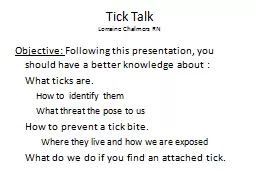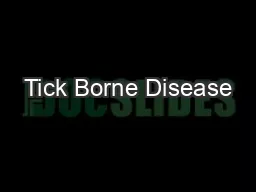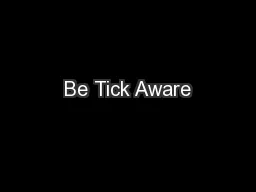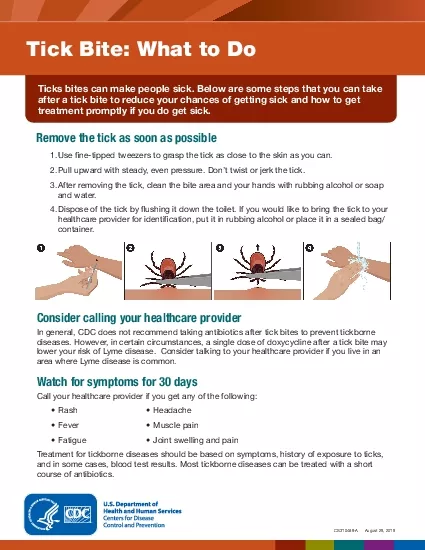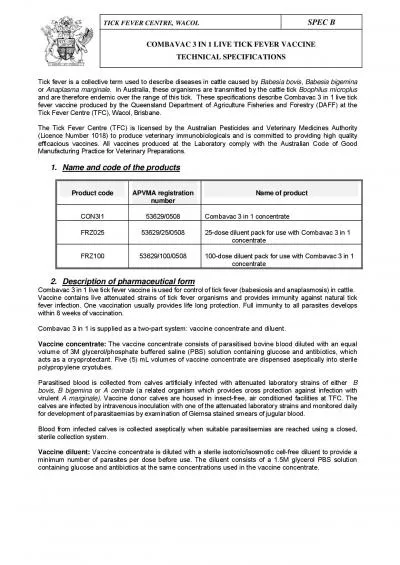PPT-Tick Talk Lorraine Chalmers RN
Author : sherrill-nordquist | Published Date : 2018-12-15
Objective Following this presentation you should have a better knowledge about What ticks are How to identify them What threat the pose to us How to prevent a
Presentation Embed Code
Download Presentation
Download Presentation The PPT/PDF document "Tick Talk Lorraine Chalmers RN" is the property of its rightful owner. Permission is granted to download and print the materials on this website for personal, non-commercial use only, and to display it on your personal computer provided you do not modify the materials and that you retain all copyright notices contained in the materials. By downloading content from our website, you accept the terms of this agreement.
Tick Talk Lorraine Chalmers RN: Transcript
Download Rules Of Document
"Tick Talk Lorraine Chalmers RN"The content belongs to its owner. You may download and print it for personal use, without modification, and keep all copyright notices. By downloading, you agree to these terms.
Related Documents

